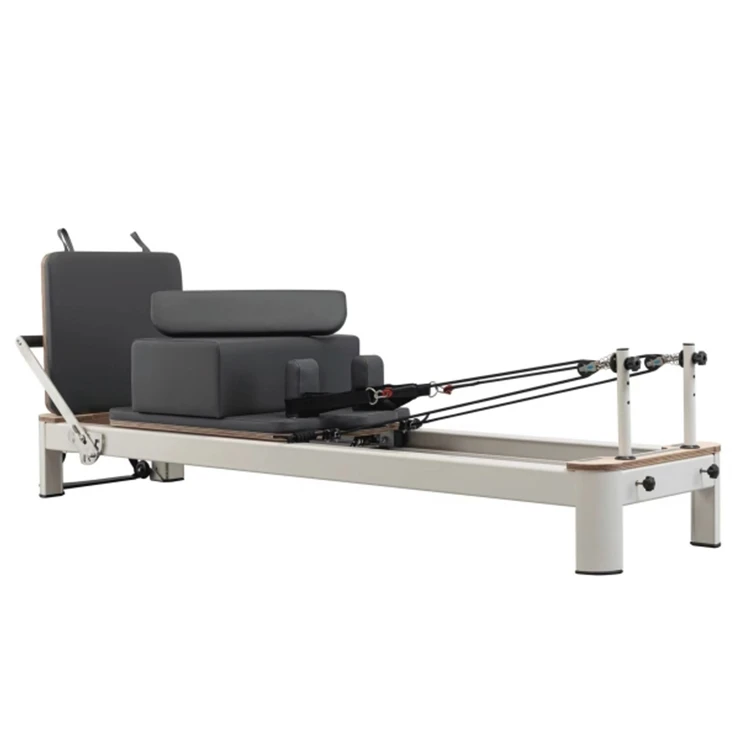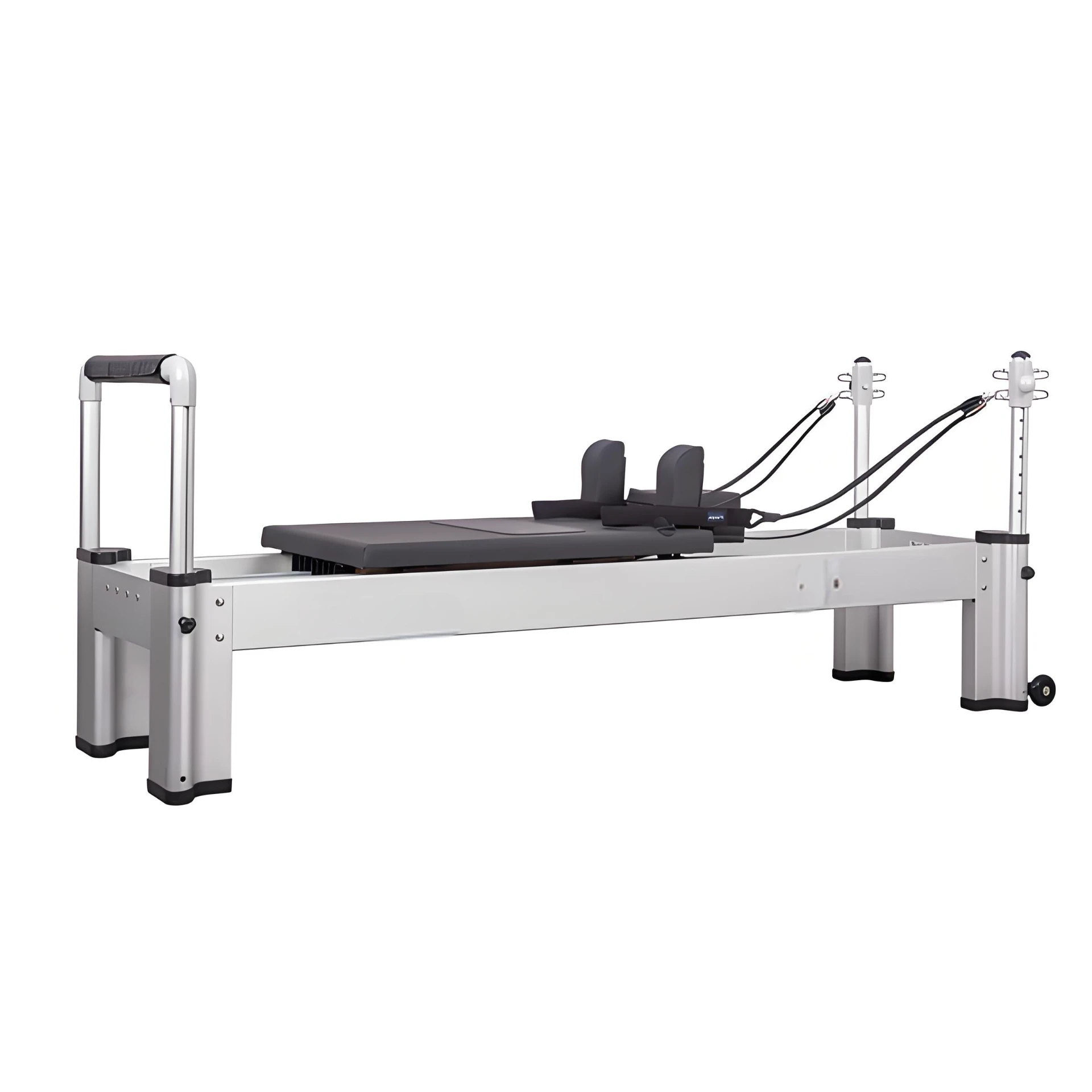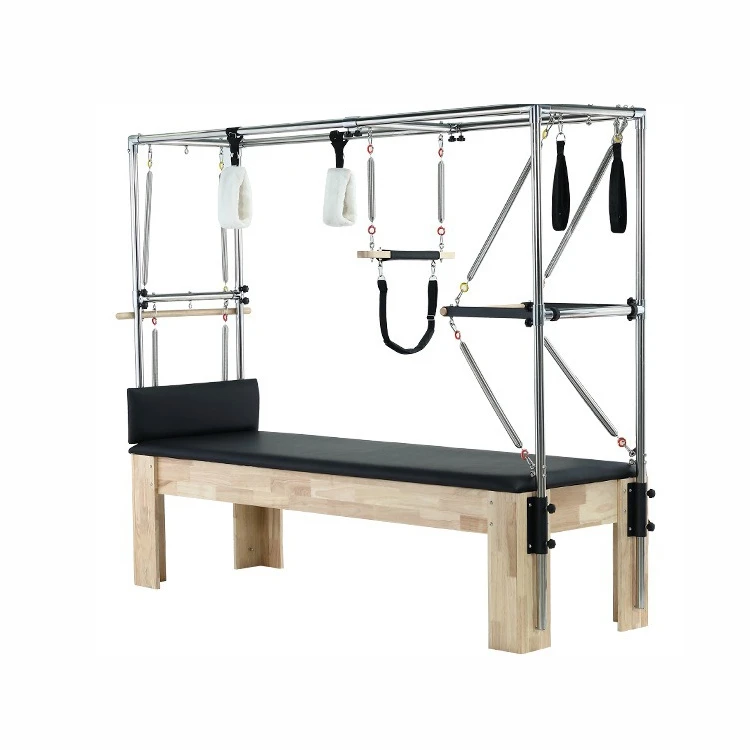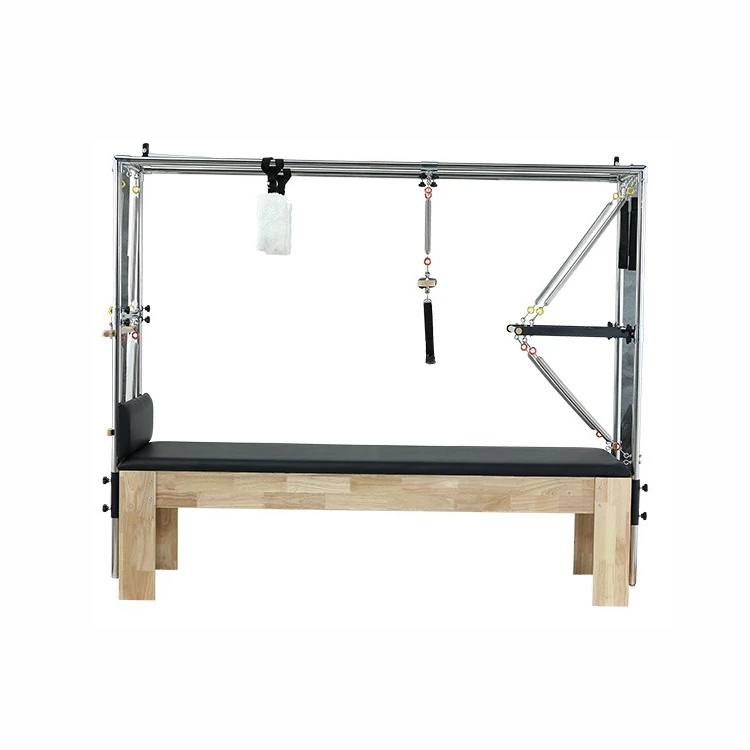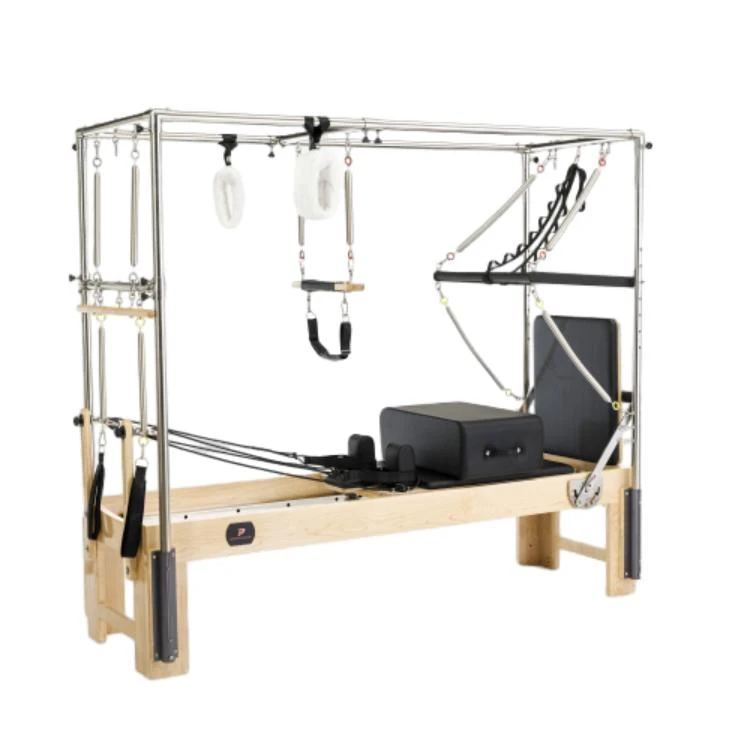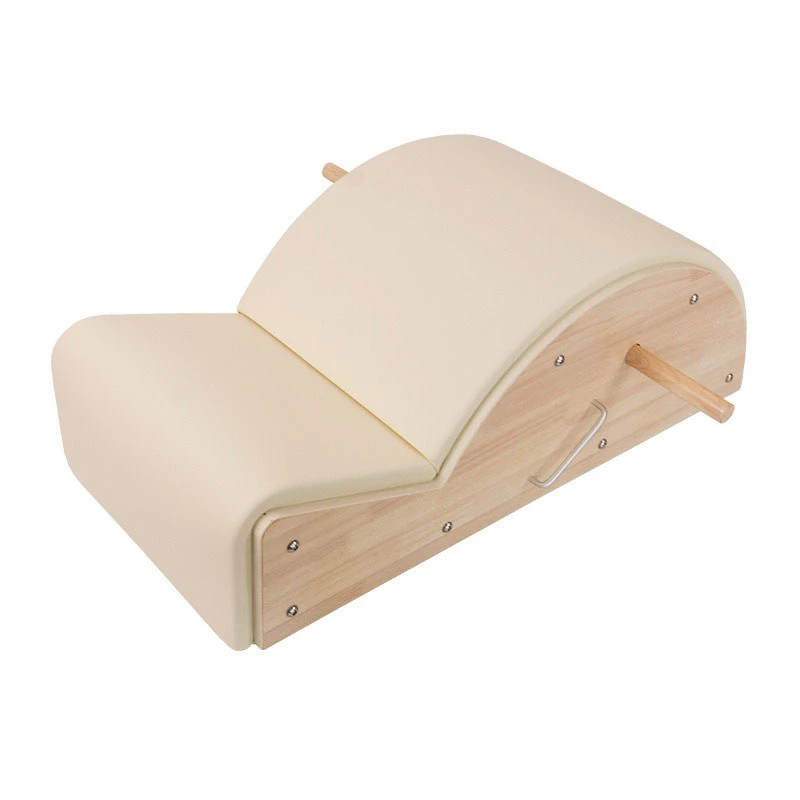Pilates Spine Corrector for Sale | Posture & Core Strength
Elevating Pilates Practice: The Strategic Investment in a Spine Corrector
In the dynamic world of fitness and rehabilitation, the demand for specialized equipment that enhances both user experience and therapeutic outcomes is continuously growing. Among the foundational apparatus in any comprehensive Pilates studio or physical therapy clinic, the pilates spine corrector for sale stands out as an indispensable tool. This expertly designed piece of equipment is engineered to support a wide array of exercises aimed at improving spinal mobility, core strength, posture, and flexibility. Its unique arc and well provide targeted support and challenge, allowing practitioners to deepen stretches, articulate the spine more effectively, and strengthen specific muscle groups with precision. For B2B buyers—studio owners, rehabilitation specialists, and institutional purchasers—understanding the intrinsic value, technical specifications, and manufacturing integrity of these units is paramount. The right investment not only enriches the client's journey but also elevates the professional standing and service quality of the facility.
The market for specialized Pilates equipment, including the pilates spine corrector for sale and related apparatus like the spine barrel, has seen consistent growth, driven by increasing awareness of Pilates benefits and the expanding demographic of practitioners. Industry reports indicate a significant upward trend in boutique fitness studio memberships, with Pilates leading the charge in mindful movement practices. This surge translates directly into a heightened need for durable, high-performance equipment that can withstand rigorous daily use in commercial settings. For studio owners, the decision to invest in a premium spine corrector is a strategic one, aimed at expanding exercise offerings, accommodating diverse client needs—from beginners to advanced athletes, and those undergoing rehabilitation—and ultimately, enhancing client satisfaction and retention. The robust design and ergonomic precision of a quality spine corrector contribute directly to the safety and effectiveness of exercises, mitigating risks while maximizing physical benefits. This makes it a critical asset for any facility committed to delivering exceptional Pilates instruction and therapeutic support.
Precision Engineering: The Manufacturing Journey of a Premium Spine Corrector
The manufacturing process of a high-quality pilates spine corrector for sale begins with the meticulous selection of raw materials, prioritizing durability, stability, and longevity. Typically, the foundational frame is constructed from solid hardwood, such as maple or birch, chosen for its inherent strength and resistance to warping. Some designs may incorporate powder-coated steel for enhanced structural integrity, particularly at stress points. The wood undergoes precise CNC machining to achieve the complex ergonomic curves of the arc and well, ensuring consistent dimensions and seamless joint integration. This precision woodworking minimizes variations, contributing to the apparatus's stability and safety during dynamic exercises. Following shaping, components are meticulously sanded and often sealed with a non-toxic, eco-friendly finish, protecting the wood from moisture and wear while maintaining a smooth, splinter-free surface. This initial stage sets the benchmark for the entire product's performance and aesthetic appeal, laying the groundwork for a piece of equipment that endures years of commercial use.
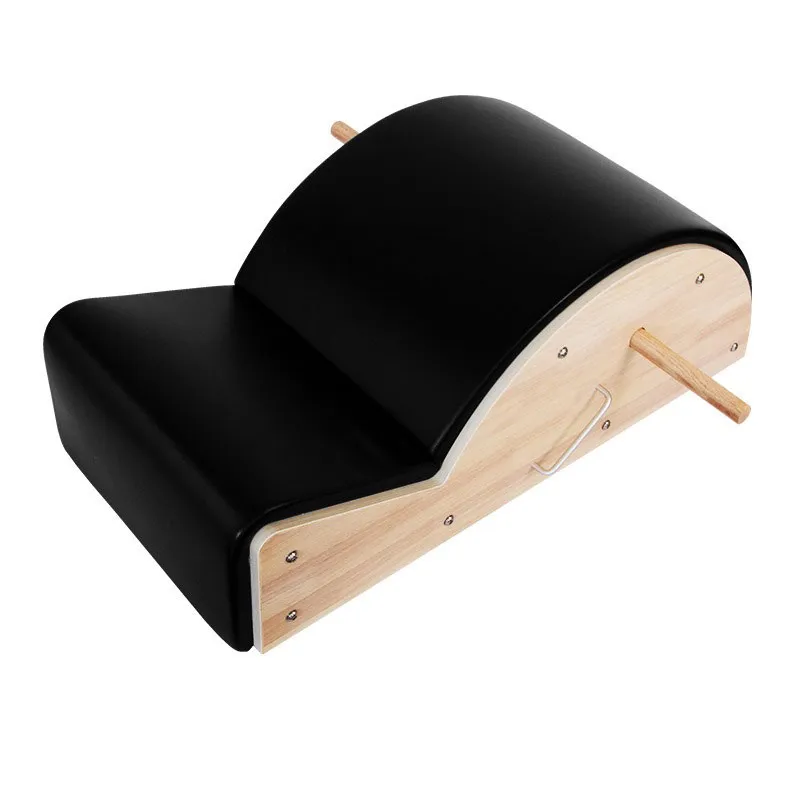
Subsequent stages focus on padding, upholstery, and final assembly, critical steps that define the comfort and tactile experience of the spine barrel. High-density EVA foam or proprietary cushioning materials are expertly cut and shaped to conform perfectly to the wooden frame's contours, providing optimal support without excessive give. This specialized foam choice is crucial for maintaining spinal alignment during exercises and ensuring the longevity of the padding, preventing compression and sagging over time. The upholstery typically involves marine-grade vinyl or a similar high-performance synthetic leather, selected for its superior resistance to sweat, tears, and abrasion, as well as its ease of cleaning and sanitization in a high-traffic commercial environment. Precision stitching and stapling techniques are employed to ensure a taut, wrinkle-free finish that also reinforces the upholstery's durability. Each component is then assembled with high-grade, corrosion-resistant hardware, ensuring structural integrity and minimizing maintenance requirements.
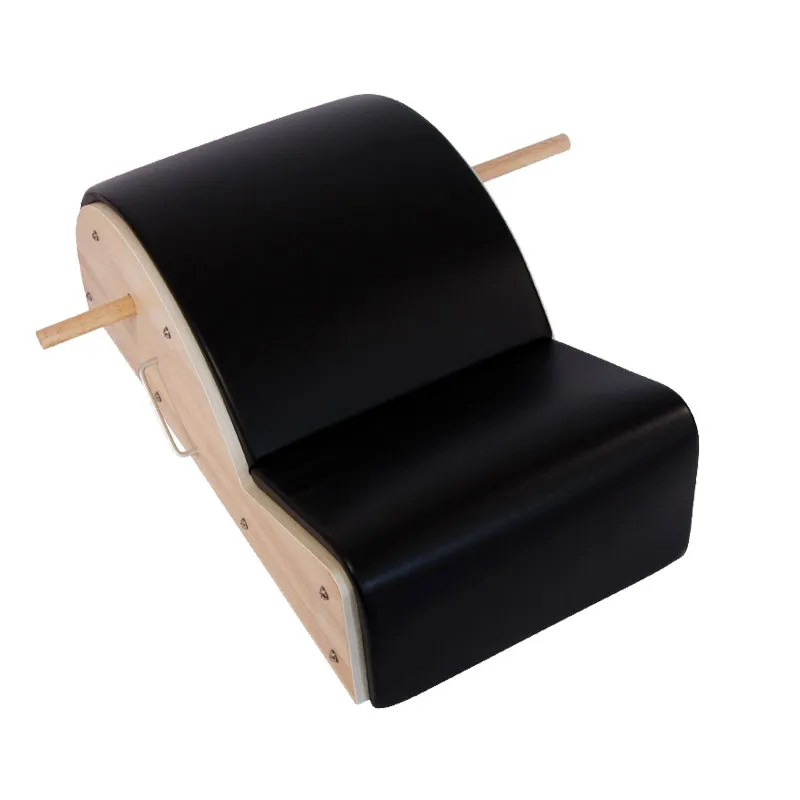
Quality control is integrated throughout the entire manufacturing pipeline, from raw material inspection to final product verification. Adherence to international standards such as ISO 9001 for quality management systems ensures consistency and reliability in every unit produced. Each pilates spine corrector for sale undergoes rigorous testing protocols, including load-bearing tests to simulate years of intense use, stability tests to confirm its base integrity, and material durability assessments to gauge resistance to wear and tear. These tests validate the product's design and material choices, guaranteeing a long operational lifespan, typically exceeding 10-15 years in a commercial setting when properly maintained. For sectors like professional Pilates studios, physical rehabilitation centers, and high-end wellness facilities, investing in equipment manufactured to such stringent standards translates into reduced replacement costs, minimal downtime for repairs, and consistent performance that supports client safety and progress. The focus on robust engineering and certified quality control ensures that these apparatus not only meet but often exceed industry expectations for performance and longevity.
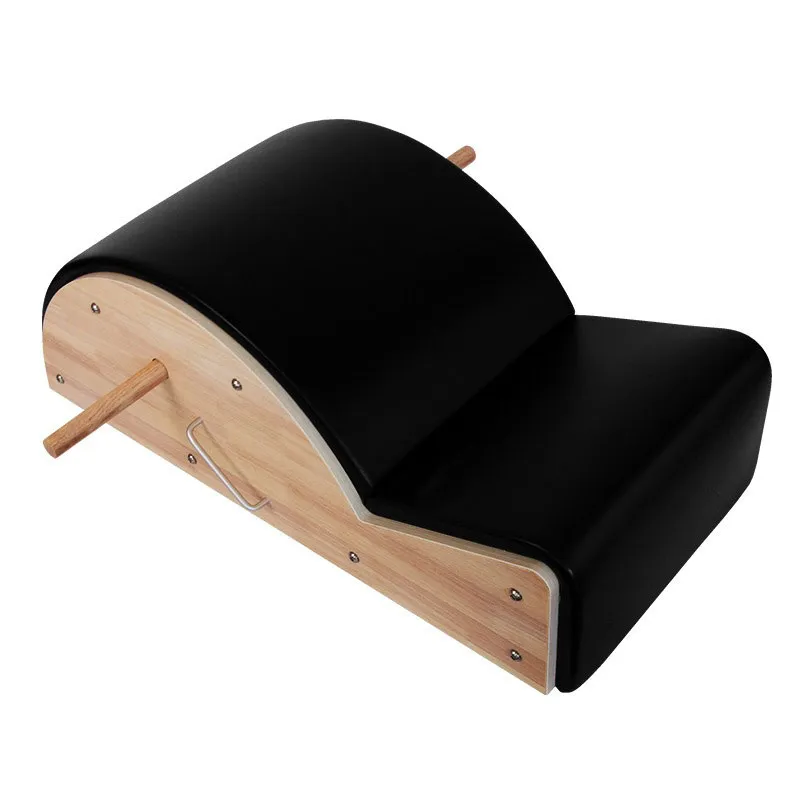
Unlocking Biomechanical Advantages: Applications and Technical Superiority
The spine barrel, also widely recognized as a pilates spine corrector for sale, offers unparalleled versatility in addressing a multitude of biomechanical goals for diverse client populations. Its primary applications revolve around enhancing spinal articulation and mobility, which are fundamental to preventing and alleviating back pain, improving posture, and increasing overall body awareness. For individuals seeking to deepen their abdominal work, the arc provides ideal support for challenging core exercises, allowing for greater range of motion and muscle engagement than traditional mat work. In rehabilitation settings, the spine corrector is invaluable for gentle spinal extension, flexion, and rotation exercises, aiding in recovery from injuries, addressing postural imbalances like kyphosis or lordosis, and improving joint health. Athletes utilize it for enhancing flexibility, increasing range of motion, and preventing injuries, while general fitness enthusiasts benefit from its ability to improve balance, coordination, and overall functional movement patterns. The apparatus facilitates both assisted stretches and resisted strength work, making it a cornerstone for comprehensive full-body conditioning.
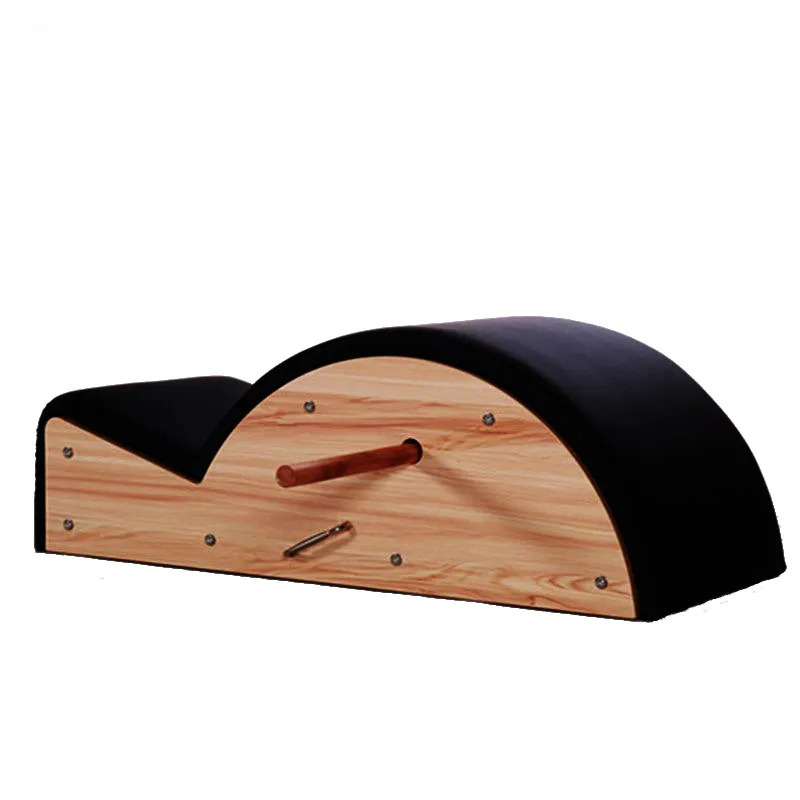
Technically, the superiority of a well-engineered pilates spine corrector for sale lies in its precise dimensions and construction. The height and curvature of the arc are meticulously calculated to accommodate varying body types and facilitate optimal spinal alignment, ensuring ergonomic support during every exercise. The density and resilience of the padding are critical; it must be firm enough to provide stable support and proprioceptive feedback, yet comfortable enough to prevent discomfort during sustained holds or deep stretches. Furthermore, the stability of the base is paramount. A broad, weighted, and non-slip base prevents unwanted movement during dynamic exercises, significantly enhancing user safety. This technical integrity translates into tangible benefits: improved exercise execution, reduced risk of strain or injury, and enhanced client confidence. For studio owners, these technical advantages mean a more reliable piece of equipment that contributes positively to client progress and the reputation of their establishment, making it a high-value asset in their equipment portfolio.
Key Specifications of a High-Quality Padded Spine Corrector
| Feature | Specification | Benefit to User/Studio |
|---|---|---|
| Dimensions (L x W x H) | Approx. 28.5" x 18" x 11.5" (72 x 46 x 29 cm) | Optimized for diverse body types; space-efficient. |
| Frame Material | Solid Maple or Baltic Birch Wood; Powder-Coated Steel Joints | Exceptional durability, stability, and longevity for commercial use. |
| Padding | High-Density EVA Foam (e.g., 2.2 lb/ft³) | Optimal comfort and support; retains shape over time. |
| Upholstery | Marine-Grade Vinyl or Eco-Friendly PU Leather | Resistant to wear, tear, and moisture; easy to clean and sanitize. |
| Weight | Approx. 18-22 lbs (8-10 kg) | Easy to maneuver yet stable during exercises. |
| Weight Capacity | Up to 350 lbs (159 kg) | Accommodates a wide range of body types safely. |
| Certifications (Typical) | ISO 9001 (Manufacturing), CE (European Safety) | Assurance of quality manufacturing and safety standards. |
Strategic Selection: Vendor Comparison and Customization Solutions
When seeking a pilates spine corrector for sale, B2B purchasers must conduct a thorough vendor comparison to ensure they secure equipment that aligns with their operational needs, budget, and quality expectations. Key factors to evaluate include material quality—differentiating between solid hardwood and plywood frames, or standard foam versus high-resilience memory foam. Inspect upholstery for tear resistance, ease of cleaning, and anti-slip properties, crucial for commercial environments. Durability, often reflected in the warranty period and reviews from other commercial clients, is paramount. Pricing varies significantly across manufacturers, often reflecting differences in material sourcing, manufacturing precision, and brand reputation. Beyond the initial purchase price, consider the total cost of ownership, factoring in longevity, maintenance requirements, and potential replacement cycles. A reputable manufacturer will provide comprehensive product specifications, transparent pricing, and robust customer support, ensuring a seamless procurement process and long-term satisfaction with your investment in a Padded Spine Corrector For Comfort During Pilates Workouts.
Comparative Analysis: Leading Spine Corrector Offerings
| Feature/Vendor | Vendor A (Premium) | Vendor B (Mid-Range) | Vendor C (Economy) |
|---|---|---|---|
| Frame Material | Solid Maple, CNC Machined | Birch Plywood, Laminated | Pine Wood, Basic Joinery |
| Padding Density | High-Density EVA (2.2 lbs/ft³) | Medium-Density Foam (1.8 lbs/ft³) | Standard Foam (1.2 lbs/ft³) |
| Upholstery | Marine-Grade Vinyl, Anti-Microbial | Commercial-Grade PU Leather | Standard Vinyl |
| Ergonomic Design | Biomechanically Optimized, Contoured | Standard Pilates Arc | Basic Arc Shape |
| Stability Features | Weighted Base, Non-Slip Feet | Rubber Feet | Standard Feet |
| Warranty (Frame/Upholstery) | 10 Years / 3 Years | 5 Years / 1 Year | 1 Year / 90 Days |
| Price Range (Approx.) | $450 - $700+ | $300 - $450 | $150 - $300 |
Beyond standard offerings, many manufacturers provide customization solutions that cater specifically to the unique branding and functional requirements of B2B clients. For large Pilates studio chains or rehabilitation networks, this can include options for custom upholstery colors, embroidered logos, or even bespoke dimensions to fit specialized spaces. OEM (Original Equipment Manufacturer) and ODM (Original Design Manufacturer) services are available for partners looking to develop their own branded line of Pilates equipment. This bespoke approach allows businesses to differentiate themselves in a competitive market, reinforce brand identity, and ensure that every piece of equipment, including their spine barrel, perfectly integrates with their facility's aesthetic and operational flow. Collaborating closely with a manufacturer capable of delivering these tailored solutions underscores a commitment to quality and a forward-thinking approach to business growth and client satisfaction.
Proven Impact: Real-World Case Studies and Client Successes
The tangible benefits of integrating high-quality pilates spine corrector for sale units into a commercial setting are best illustrated through real-world applications and client success stories. Consider "Spinal Flow Studio," a thriving Pilates center that invested in a fleet of premium spine correctors. Before this acquisition, the studio's instructors often found it challenging to provide sufficient spinal support and proprioceptive feedback for clients with limited mobility or certain postural imbalances using only mat-based exercises. Post-integration, the studio reported a 25% increase in client engagement during corrective exercise sessions, with clients expressing greater comfort and perceived effectiveness. The instructors noted significant improvements in clients' spinal articulation, core engagement, and overall posture within a few weeks of consistent use. This direct correlation between equipment quality and client progress not only enhances the studio's reputation but also contributes directly to client retention and positive word-of-mouth referrals, validating the strategic investment in superior apparatus.
Another compelling case comes from "Rehab & Restore Clinic," a physical therapy practice specializing in musculoskeletal recovery. The clinic incorporated the spine barrel into their post-operative rehabilitation protocols and chronic pain management programs. One notable case involved a patient recovering from lumbar disc herniation, who initially struggled with fear of movement and limited spinal mobility. Using the spine corrector for gentle, controlled spinal extensions and core stabilization exercises, the patient gradually regained confidence and range of motion. The apparatus provided the necessary support and feedback, allowing for targeted muscle activation without overstressing the healing spine. Within eight weeks, the patient demonstrated a 40% improvement in functional mobility scores and a significant reduction in pain levels, exceeding initial therapeutic projections. This outcome highlights the spine corrector's critical role as a precision tool in facilitating safe, effective, and progressive rehabilitation, making it an indispensable asset for clinics focused on measurable patient outcomes and professional excellence.
Ensuring Trust and Reliability: FAQs, Warranty, and Support
Addressing common inquiries is crucial for B2B confidence when considering a pilates spine corrector for sale. Potential buyers frequently ask about maintenance: high-quality units are designed for minimal upkeep, typically requiring only routine cleaning of upholstery with a mild disinfectant. Compatibility with existing studio equipment is also a common query, and most spine correctors are standalone units, easily integrated into any Pilates or rehab space. For specific exercise modifications, instructors appreciate the versatile nature of the apparatus. Furthermore, understanding the delivery cycle is vital for operational planning. Reputable manufacturers typically provide clear lead times, often between 2-4 weeks for standard models, with longer periods for custom orders. Efficient logistics and reliable shipping partners ensure that equipment arrives safely and on schedule, minimizing disruptions to studio operations and enabling timely expansion of service offerings.
A robust warranty policy and comprehensive customer support are non-negotiable for commercial-grade equipment like the spine barrel. Leading manufacturers offer substantial warranties on the frame, typically 5-10 years, reflecting their confidence in material integrity and craftsmanship. Upholstery and padding usually carry a shorter warranty, often 1-3 years, accounting for typical wear and tear in commercial use. This commitment safeguards your investment against manufacturing defects and premature failure. Beyond the warranty, responsive customer support is paramount. This includes readily available technical assistance for minor adjustments, a clear process for warranty claims, and access to replacement parts should they be needed over the product's extended lifespan. For B2B clients, knowing that a dedicated support team is available to address any issues promptly provides immense peace of mind, reinforcing the trustworthiness of the manufacturer and ensuring uninterrupted service for their clients.
Authoritative References
- Pilates Method Alliance. "The Pilates Glossary: An Essential Resource for Instructors and Practitioners." Accessed through professional training manuals.
- International Organization for Standardization. "ISO 9001: Quality management systems – Requirements." Standards publication.
- American Council on Exercise (ACE). "Biomechanics of Pilates: Understanding Core Principles." Research insights.
- Journal of Orthopaedic & Sports Physical Therapy. "The Role of Core Stability in Low Back Pain: A Systematic Review." Peer-reviewed articles.
Latest news
-
The Versatility of Pilates Arcs in Modern Pilates EquipmentNewsAug.15,2025
-
Reformer Pilates Equipment for Sale: Features & Benefits for WholesalersNewsAug.15,2025
-
Pilates Spine Supporters & Correctors: Enhance Comfort and PostureNewsAug.15,2025
-
Pilates Pro Chair Overview & BenefitsNewsAug.15,2025
-
Pilates Pads Equipment & Accessories: Elevate Your Fitness BusinessNewsAug.15,2025
-
Circle Pilates: Elevate Your Fitness Business with Premium EquipmentNewsAug.15,2025
- Address
- Room 1601, 1302, Building A, Zijingguandi, Qiaodong District, Xingtai City, Hebei Province, China
- Sandra@raetin.com
- Phone
- +86 18231139331

